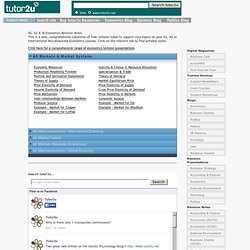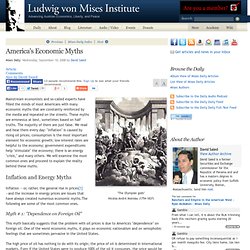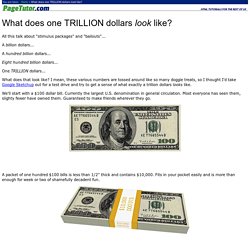

The Story of Cap & Trade. Economics Revision Notes for AS, A2 & IB Economics. AS, A2 & IB Economics Revision Notes This is a new, comprehensive collection of free revision notes to support core topics on your AS, A2 or International Baccaleaurate Economics courses.

Click on the relevant tab to find suitable notes. Click here for a comprehensive range of economics revision presentations Digital Magazines Business Cafe econoMAX First Past the Post Teacher Services Subject Newsletters Inset Courses Student Workshops Blogs Economics Business Studies Politics History IB Diploma Sociology Law Religious Studies Revision Presentations Business Strategy Accounting & Finance Economics External Environment Marketing Politics Revision Notes Accounting & Finance Economics (AS/A2) Economics (GCSE) External Environment Business Studies (GCSE) Marketing People / Organisations Politics Production & Ops Religious Studies (AS/A2) Sociology (GCSE) Strategy Quizzes The Biz Quiz (Business) Accounting & Finance Economics (AS/A2) Money As Debt. Economics 101: Consumer Price Index.
America's Economic Myths - David Saied. "The Olympian gods" Nicolas-André Monsiau (1754–1837) Mainstream economists and so-called experts have filled the minds of most Americans with many economic myths that are constantly reinforced by the media and repeated on the streets.

These myths are erroneous at best, sometimes based on half truths. The majority of them are just false. We read and hear them every day: "inflation" is caused by rising oil prices; consumption is the most important element for economic growth; low interest rates are helpful to the economy; government expenditures help "stimulate" the economy; there is an energy "crisis," and many others. Inflation and Energy Myths Inflation — or, rather, the general rise in prices[1] —and the increase in energy prices are issues that have always created numerous economic myths.The following are some of the most common ones.
Myth # 1: "Dependence on Foreign Oil" This myth basically suggests that the problem with oil prices is due to America's "dependence" on foreign oil. Note. Adam Smith, Wealth of Nations, Contents. Introduction Chapter 1.

Of the Division of Stock Chapter 2. Of Money considered as a particular branch of the general Society, or of the Expense of maintaining the National Capital Chapter 3. Chapter 4. Chapter 5. Introduction Chapter 1. Chapter 2. Chapter 3. Part 1. PART 2. CHAPTER 4. CHAPTER 5. CHAPTER VI Of Treaties of Commerce CHAPTER VII Of Colonies PART 1 Of the Motives for establishing new Colonies. EconSources - Your one-stop portal for the best economic information on the web! Healthscatter2.png (PNG Image, 700x600 pixels) Library of Economics and Liberty. What does one TRILLION dollars look like? All this talk about "stimulus packages" and "bailouts"...

A billion dollars... A hundred billion dollars... Eight hundred billion dollars... One TRILLION dollars... What does that look like? We'll start with a $100 dollar bill. A packet of one hundred $100 bills is less than 1/2" thick and contains $10,000. Believe it or not, this next little pile is $1 million dollars (100 packets of $10,000). While a measly $1 million looked a little unimpressive, $100 million is a little more respectable. And $1 BILLION dollars... now we're really getting somewhere... Next we'll look at ONE TRILLION dollars. You ready for this? It's pretty surprising. Go ahead...
Scroll down... Ladies and gentlemen... Notice those pallets are double stacked....and remember those are $100 bills. So the next time you hear someone toss around the phrase "trillion dollars"... that's what they're talking about.